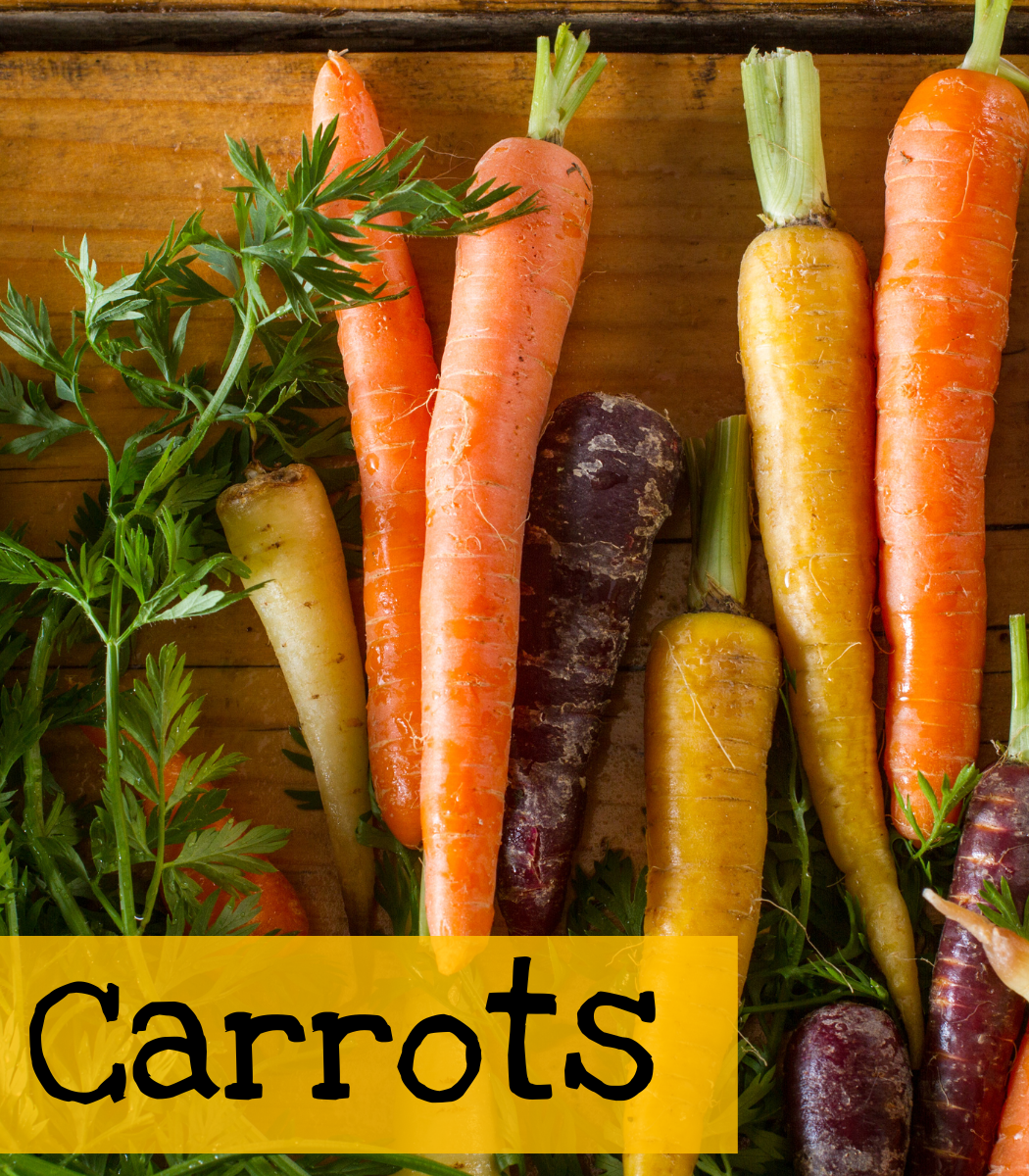
Carrot
Orange wasn’t even a color of carrots until around the 17th century when Dutch farmers cultivated orange carrots in honor of William the Orange. Packed with vitamins, this root crop, is good raw, steamed, or roasted.
|
Davers 126; Danvers 126 Half Long; Gniff; Kaleidoscope Blend; Koral; Little Finger; Nantes Supreme; Short ‘n Sweet |
|
Daucus carota |
|
Intermediate |
|
Extremely hard (for GA) |
|
3 years if properly stored |
|
Biennial |
|
10-18 Days |
|
None |
|
Surface Sow |
|
18” high x 10-12” spread |
|
|
|
Needs light to germinate Full sun, but will tolerate part shade |
|
60-80 days |
|
February and August |
|
Yes |

Growing Tips


For smaller carrots only (3-7” length): use at least a 12” pot and thin to 4” apart.
When to Start
Spring: Start 3-5 weeks before the last average frost date. (Jan 15 – Mar 20 GA)
Fall: Start 10 weeks before the first average frost date. (Aug 20 – Sep 15 GA)
How to Start
Carrots are finicky about their soil and placement. They like sandy, well-draining soil, free from rocks and other debris. Heavy soils cause carrots to mature slowly and look ugly.
Direct sow seeds outdoors. Gently press the seeds into the soil as carrots need light to germinate. Sow in rows 1-2’’ apart. They are slow to germinate.
Care
While carrots will tolerate some shade, full sun is best. When the plants are 4 inches high, thin the plants to 2 inches apart. You may find that some of the carrots are large enough to eat. Keep thinning the carrots regularly to 4 inches apart. Carrots need 1-2 inches of water a week. They are a cool-weather crop and as such, they will turn bitter in the summer heat. The carrots will get sweeter after experiencing a few touches of frost.
Harvest
Most carrots should be ready for harvest when the carrots are around 1/2 inches.
Pro Tip!
Incompatibles: Celery and dill
Grows well with: Beans, leeks, peppers, and tomatoes
Seed Saving
 for GA
for GA
Isolation Distance
It is Xtremely Hard to save seeds from carrots in Georgia. Carrots are insect-dependent for pollination. They will cross with Queen Ann’s Lace and other carrots. Different varieties need to be separated by 1/2 mile.
It takes 2 years to flower. It’s possible to get seeds, but the heat we get could kill them. And who wants to sacrifice an entire year of planting space to get carrots seeds? So it’s hard because of the sacrifice and our heat. They just might not survive.
–Master Gardener Brandy Pethel
Instructions
Caging is a good alternative to separation as Queen Ann’s Lace is a common weed. However, with caging hand pollination is required. Simply take a paintbrush to transfer pollen between umbels on different plants during the time the tiny individual flowers are blooming.
Features
- Danvers 126: Heirloom, good for all soil types. Rich-dark orange.
- Danvers 126 Half Long: Heirloom. A productive, old standard carrot.
- Gniff: Very old and rare. Purple exteriors with yellow to white hearts. Good for storage
- Kaleidoscope Blend: Heirloom. Five different colors (Red, Orange, Purple, White, and Yellow).
- Koral: Productive and vigorous. Deep orange roots that resist splitting.
- Little Finger: A very sweet Nantes type.
- Nantes Supreme: Stores better than other Nantes varieties.
- Short’n Sweet: Good in heavy or shallow soils. Bright orange.

Carrots require vernalization (prolonged exposure to the cold of winter) to flower. Carrots will flower in the 2nd year if vernalization has taken place. You can overwinter the cop by mulching well. Carrots are very hard to get seeds from in Georgia as the winters aren’t typically cold enough and long enough. If you get seed you are lucky.
Carrot seeds are very small and can be difficult to sow. Mix the seeds with sand and then sow the sand/seed mixture. This will help keep the seeds more evenly spaced out instead of clumping together.
